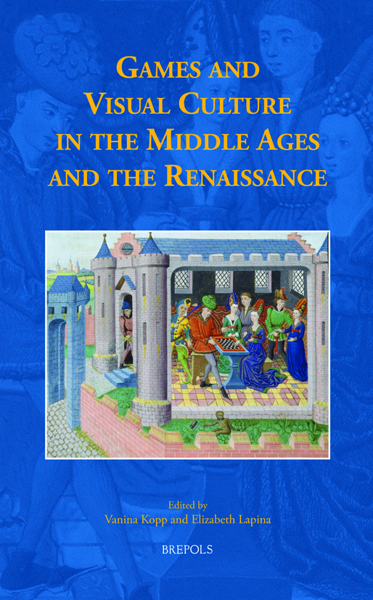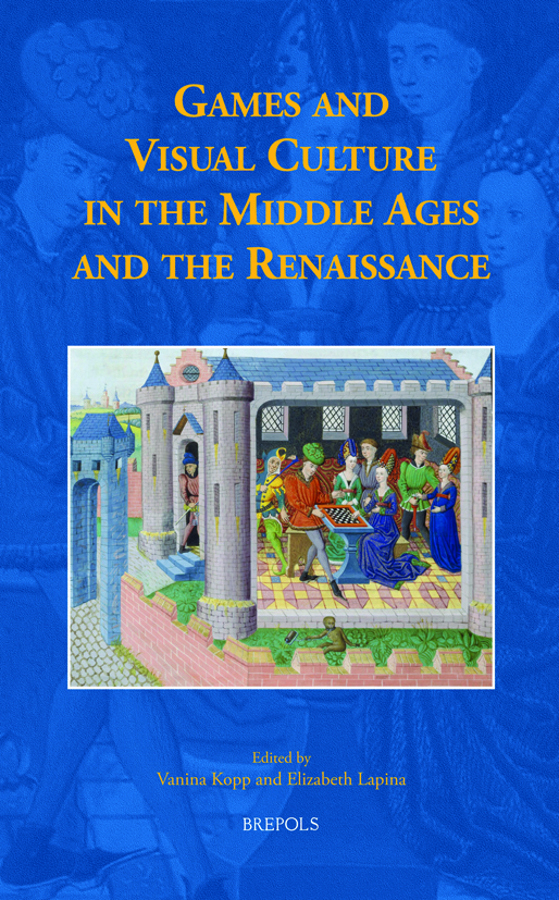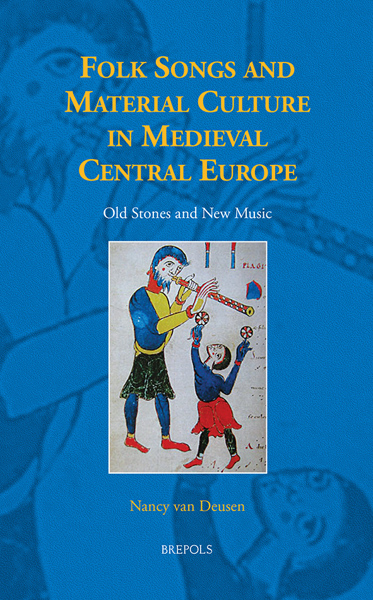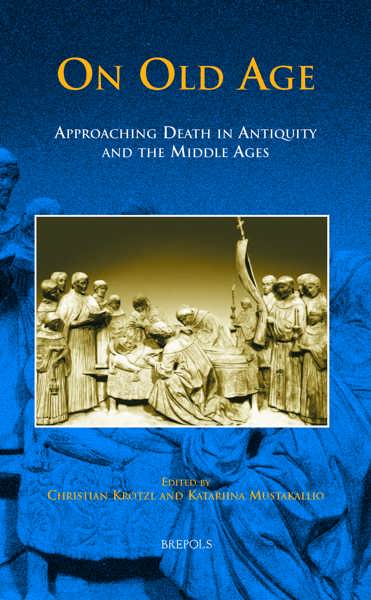
Games and Visual Culture in the Middle Ages and the Renaissance
Vanina Kopp, Elizabeth Lapina (eds)
- Pages: 356 p.
- Size:156 x 234 mm
- Illustrations:62 b/w, 25 col., 2 tables b/w.
- Language(s):English
- Publication Year:2021
- € 85,00 EXCL. VAT RETAIL PRICE
- ISBN: 978-2-503-58872-8
- Hardback
- Available
- € 85,00 EXCL. VAT RETAIL PRICE
- ISBN: 978-2-503-58873-5
- E-book
- Available
The volume contributes to reconstruction of medieval and early modern gaming culture through analysis of visual and material evidence.
“In sum, this is an enjoyable collection of solid essays ripe with points of overlap and intersection.” (Jenny Adams, in The Medieval Review, 21.11.17
“The volume accentuates the importance of games and game-playing in the premodern period and builds on previous work in more depth. Games and Visual Culture in the Middle Ages and Renaissance is invaluable to undergraduates and scholars interested in premodern games, literature, and visual culture.” (Frank Swannack, in Parergon, 38/2, 2021, p. 228)
“This is a thought-provoking and enjoyable volume of interest both to game scholars and period specialists engaged with the themes of play and games across multiple disciplines. They will be introduced to a wide range of subjects and a refreshingly broad approach to “visual culture” that recognises the complexities inherent in the use of this term.” (Naomi Lebens, in Ludica. Annali di storia e civiltà del gioco, 27, 202, p. 127)
« Alors que chaque année voit la publication de plusieurs volumes collectifs concernant les jeux de société médiévaux – le plus souvent abordés sous un angle littéraire – ce recueil se distingue par sa diversité disciplinaire et par la variété des types de jeux (et jouets) qu’il aborde. » (Luc Bourgeois, dans Francia, 2, 2022)
Vanina Kopp is Privatdozentin at the University of Münster. She was research group leader on medieval games at the German Historical Institute in Paris, where she wrote her second book Sacred, Serious, Subversive (Habilitation, 2020) on literary games in monastic, courtly, and urban contexts, and she has co-edited two volumes on educational games (Jeux éducatifs et savoirs ludiques in Ludica, 2016-2018). She is also the author of one monograph (Der König und die Bücher, Thorbecke 2016) and co-author of an edited volume on archives and power (Archiv Macht Wissen, Campus 2010).
Elizabeth Lapina is Associate Professor of Medieval History and Director of the Medieval Studies Program at the University of Wisconsin - Madison. She is the author of one monograph (Warfare and the Miraculous in the Chronicles of the First Crusade, Penn State, 2015) and is co-editor of two volumes (The Crusades and Visual Culture, Ashgate, 2015 and The Uses of the Bible in Crusader Sources, Brill, 2017). Her articles include "Gambling and Gaming in the Holy Land: Chess, Dice and Other Games in the Sources of the Crusades," published in Crusades in 2013.
During the Middle Ages and the Renaissance, games were not an idle pastime, but were in fact important tools for exploring, transmitting, enhancing, subverting, and challenging social practices and their rules. Their study, through both visual and material sources, offers a unique insight into medieval and early modern gaming culture, shedding light not only on why, where, when, with whom and in what conditions and circumstances people played games, but also on the variety of interpretations that they had of games and play. Representations of games, and of artefacts associated with games, also often served to communicate complex ideas on topics that ranged from war to love, and from politics to theology.
This volume offers a particular focus onto the type of games that required little or no physical exertion and that, consequently, all people could enjoy, regardless of age, gender, status, occupation, or religion. The representations and artefacts discussed here by contributors, who come from varied disciplines including history, literary studies, art history, and archaeology, cover a wide geographical and chronological range, from Spain to Scandinavia to the Ottoman Turkey and from the early medieval period to the seventeenth century and beyond. Far from offering the ‘last word’ on the subject, it is hoped that this volume will encourage further studies.
List of Illustrations
Introduction — VANINA KOPP AND ELIZABETH LAPINA
Rhetoric and Reality in the Visual Culture of Medieval Celtic Board Games: Literary and Archaeological Evidence Combined — KATHERINE FORSYTH AND MARK A. HALL
‘Turne Over the Leef’: Games and Interpretation on Misericords — PAUL HARDWICK
Gambling Miners — LENA ASRIH AND JENNIFER GARNER
Chess and Cultural Crossings in Boccaccio — AKASH KUMAR
Visualizing Chess and Love in Les Eschéz d’Amours — DANIEL E. O’SULLIVAN
Game as a Sign of Social Status: Backgammon in the Ottoman Literature and Visual Culture — TÜLÜN DEĞIRMENCI
Chess of the Gnostics: The Sufi Version of Snakes and Ladders in Turkey and India — İRVIN CEMIL SCHICK
Playthings: Ivory on Ivory — ELINA GERTSMAN
The Playing Eye: On the Transfer of Game-related Knowledge through Miniatures in Alfonso X’s Book of Games (1283/84) — MICHAEL A. CONRAD
Children’s Toys in Italy, 1350–1550 — ANNEMARIEKE WILLEMSEN
The Printed Book and the Visual Culture of Chess in the Late Middle Ages: William Caxton’s 1483 Edition of The Game and Playe of Chess — LOUISE FANG
Graffiti as Gaming: Vikings at Play in the Orkney Islands — JULIE MELL
Scratching the Surface: Graffiti Games in the Byzantine Empire — WALTER CRIST




